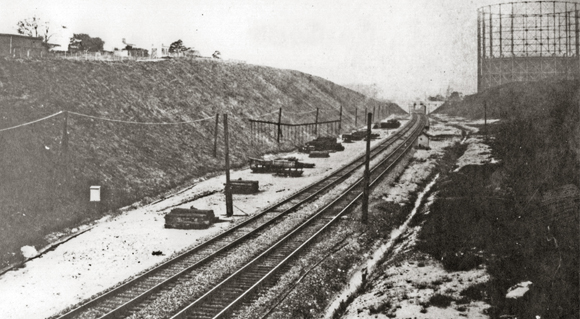Back in the late 19th century the Pennsylvania Railroad (PRR) proclaimed itself the Standard Railroad of the world. It was a time when railroads were king and expansion projects were often privately funded.
Such was the case of the PRR that sought to improve its access to the New York gateway. Up to that time, the PRR moved cargo and passengers via ferry boats across New York harbor. Technology, in the guise of the industrial revolution, led to advances in bridge building and tunneling.
Around the turn of the nineteenth century PRR officials led by Pennsylvania President Alexander Cassatt, visited Europe to study electrified railways. Electrification made it possible to run electric trains underground avoiding the threat of asphyxiation that accompanied steam operations in confined areas.
The Pennsylvania put together a comprehensive plan that became known as the New York Extension Project. This expansion included building Penn Station in mid-town Manhattan, two Hudson River tunnels, four East River tunnels, and Sunnyside Yard in Queens.
In addition, it called for the improvement of freight handling facilities at Oak Point Yard in the Bronx, Bay Ridge Yard in Brooklyn, and at Greenville New Jersey. A key node was establishing a connection with the Long Island Railroad (LIRR) at Fresh Pond Junction in Glendale Queens. The NYCR however, remained dependent on car float operations to move freight across the harbor between the Oak Point and Bay Ridge yards.
The PRR’s chief competitor and arch-rival—the New York Central Railroad—already enjoyed direct access to the New York metropolis. Once competing route variations were finalized, it was decided that the Connecting would bridge the East River at Hell Gate. By 1903 work on the Extension Project was begun although construction of the NYCR itself did not begin until about 1910.
The NYCR was the last act of an ambitious plan. The all rail route via the Hudson and East River tunnels, Penn Station, Sunnyside Yard, and the Hell Gate Bridge, enabled passenger trains to move freely through the heart of the City.
The Connecting was jointly owned by the Pennsylvania and New Haven railroads, and operated exclusively by the New York, New Haven & Hartford Railroad (i.e. the New Haven). It extends from Port Morris Crossing in the Bronx, just south of the entrance to Oak Point Yard about eight miles to Fresh Pond Junction in Glendale Queens.
There is also a 0.9 mile connection with Sunnyside Yard, once the largest electrified passenger car yard in the world. The NYCR has track rights over the Long Island Railroad’s 11 mile Bay Ridge Branch to reach the car floats at the 65th Street Yard in Brooklyn.
At the time, railroads were being held to a higher standard of construction and operation. The NYCR was built as a grade separation railroad. Its tracks crossed either above or below street level greatly minimizing traffic disruptions. Much of the Connecting was built in a cut, again placing it out of sight. For most of its existence, the NYCR employed electric locomotives that reduced noise and other pollutants.
The City also had a smoke abatement policy that discouraged the use of steam powered locomotives in city limits.
The magnificent Hell Gate Bridge set the tone for the NYCR to be more than any ordinary bridge, or shall we say bridges? Next: construction.



